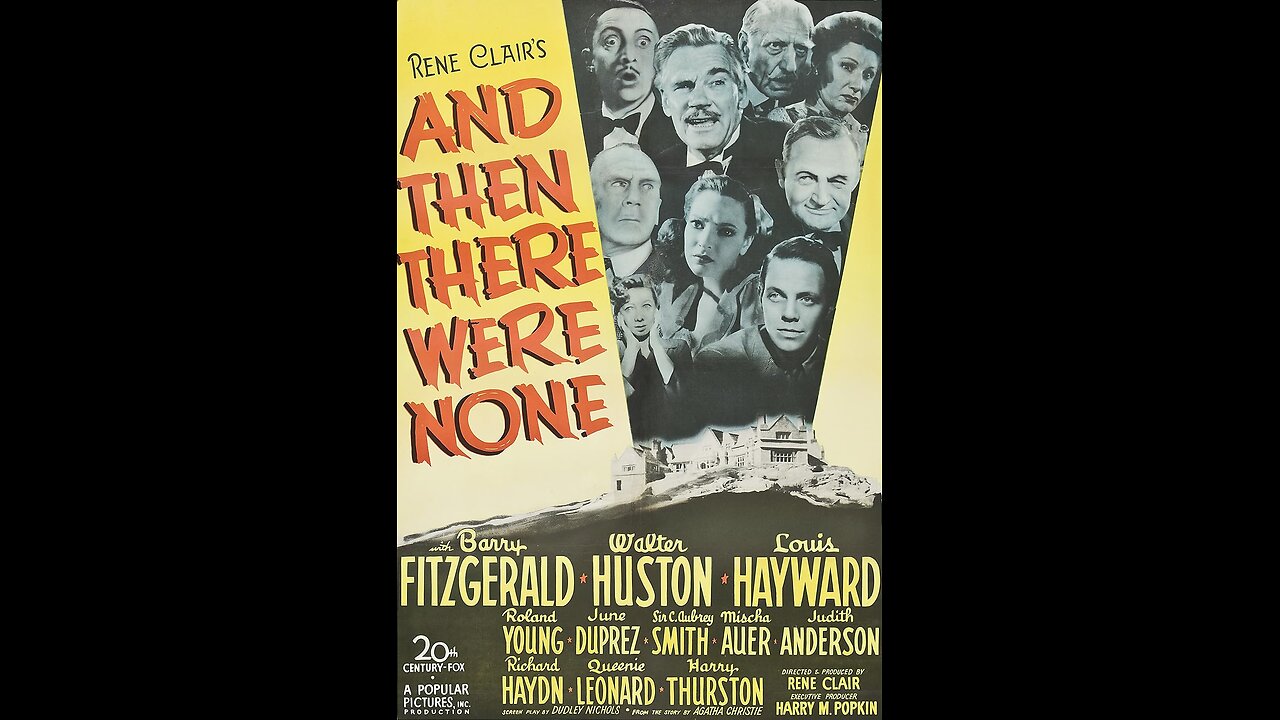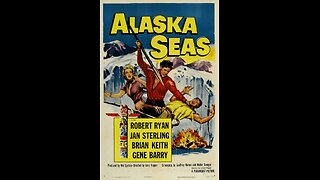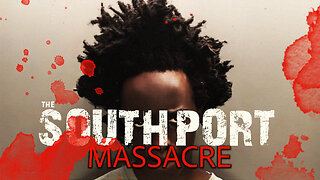Premium Only Content

And Then There Were None (1945) | Directed by René Clair
Directed by René Clair, "And Then There Were None" is a classic mystery thriller based on Agatha Christie's novel. Ten strangers are invited to an isolated island under various pretexts, only to find themselves accused of crimes they've committed in the past. As they begin to die one by one, tension rises, and the survivors must unravel the mystery of their own deaths before it's too late.
Ensemble Cast and Performances:
The film boasts an impressive ensemble cast, including Barry Fitzgerald, Walter Huston, Louis Hayward, and June Duprez. Each actor brings depth to their characters, capturing the suspenseful atmosphere and paranoia that permeates the story. The chemistry among the cast members contributes to the film's success in building tension and intrigue.
Mystery and Suspense:
René Clair skillfully adapts Agatha Christie's intricate plot, maintaining a high level of suspense throughout the film. The mystery unfolds methodically, keeping the audience guessing about the identity of the killer. The isolated island setting adds to the claustrophobic atmosphere, intensifying the suspense as the characters realize the gravity of their situation.
Cinematography and Atmosphere:
The cinematography, led by cinematographer Lucien N. Andriot, creates a visually striking and ominous atmosphere. The use of shadow and light enhances the eerie ambiance of the island, contributing to the film's overall sense of foreboding. The camera work effectively captures the isolation and vulnerability of the characters.
Adaptation and Faithfulness:
While some changes were made for the film adaptation, "And Then There Were None" remains faithful to the essence of Agatha Christie's novel. The intricate web of suspense, the clever use of misdirection, and the shocking revelations are retained, ensuring that fans of the source material will find much to appreciate in the film.
Score and Sound Design:
The musical score by Mario Castelnuovo-Tedesco complements the film's suspenseful tone. The haunting melodies enhance key moments, heightening the tension and contributing to the overall atmosphere. The effective use of sound design further immerses the audience in the unfolding mystery.
Themes of Guilt and Redemption:
"And Then There Were None" delves into themes of guilt and redemption, as each character is forced to confront their past actions. The moral complexities of the characters' histories add depth to the narrative, and the film becomes not just a murder mystery but a psychological exploration of the consequences of one's actions.
Twists and Turns:
The film is renowned for its clever plot twists and unexpected turns. As the characters face their own mortality, alliances shift, and suspicions abound. The intricate plotting keeps the audience engaged, and the resolution delivers a satisfying yet shocking conclusion.
Legacy and Influence:
"And Then There Were None" has left a lasting legacy as one of the classic adaptations of Agatha Christie's work. Its influence can be seen in subsequent mystery and thriller films, and the story's enduring popularity has led to various adaptations across different mediums.
Conclusion:
"And Then There Were None" is a masterfully crafted mystery thriller that successfully translates Agatha Christie's intricate plot to the screen. René Clair's direction, combined with a talented ensemble cast and a suspenseful atmosphere, creates a cinematic experience that continues to captivate audiences. The film remains a shining example of the genre, known for its clever storytelling, atmospheric tension, and timeless appeal.
-
 1:17:06
1:17:06
Classic Films & Movies Archive
18 hours agoAlaska Seas (1954) | Directed by Jerry Hopper
69 -
![[Day 26] CS Blast bounty baby](https://1a-1791.com/video/fwe2/8a/s8/1/Z/H/j/_/ZHj_w.0kob-small-Day-26-CS-Blast-bounty-baby.jpg) 2:09:11
2:09:11
ggezlol_tv
3 hours ago[Day 26] CS Blast bounty baby
32.1K1 -
 2:32:17
2:32:17
Sgtfinesse
2 hours ago💥Sunday Morning Hunt for Featherweight Artifact | New World PVP Server: Sclavia
11.8K1 -
 11:25
11:25
Film Threat
19 hours agoLET'S DISCUSS THE 2025 OSCAR NOMINATIONS | Film Threat News
21.8K8 -
 13:07
13:07
DEADBUGsays
3 hours agoThe Southport Massacre, The Great British Cover-Up
22.5K12 -
 25:26
25:26
hickok45
6 hours agoSunday Shoot-a-Round # 265
19.3K25 -
 30:55
30:55
Tundra Tactical
17 hours ago $15.96 earnedFaith, Family, Gun Rights : Tundra Tactical Interviews Erich Pratt Vice President Of GOA
99.6K17 -
 24:08
24:08
MYLUNCHBREAK CHANNEL PAGE
1 day agoUnder The Necropolis - Pt 4
229K63 -
 1:26:44
1:26:44
Tactical Advisor
1 day agoTrump Starting Strong/Shot Show Recap | Vault Room Live Stream 015
127K10 -
 49:13
49:13
SGT Report
1 day agoGILDED CAGE: A.I. PRODUCED MRNA VACCINES & THE ROAD TO HELL -- Sam Anthony
78.9K402